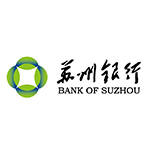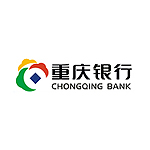BANK OF SUZHOU(002966)
Search documents
24家A股银行将现金分红超2600亿元
2 1 Shi Ji Jing Ji Bao Dao· 2025-11-24 12:56
Core Viewpoint - The recent surge in stock prices of major Chinese banks is driven by their mid-term dividend announcements, with a total cash dividend amounting to 2637.90 billion yuan for 2025, indicating significant investment potential in the banking sector [2][4]. Dividend Announcements - As of November 24, 2025, 24 A-share listed banks have disclosed their mid-term dividend plans, with a total cash dividend of 2638 billion yuan [4]. - Notably, seven banks, including Industrial Bank, Changsha Bank, and Ningbo Bank, are implementing mid-term dividends for the first time since their listings [2]. - The six major state-owned banks are expected to distribute over 2046 billion yuan in dividends [5]. Dividend Yield - The average dividend yield for listed banks as of November 24 is 4.48%, with 12 banks yielding over 5% and 26 banks exceeding 4% [6]. - Specific banks like Bank of Communications and China Construction Bank have dividend yields of 4.18% and 3.93%, respectively [6]. Shareholder and Executive Buybacks - There has been a notable increase in share buybacks by major shareholders and executives of listed banks, signaling positive market sentiment [8]. - For instance, Chengdu Bank's major shareholders have collectively bought approximately 34.25 million shares, investing 6.11 billion yuan from August 27 to November 21 [8]. - Nanjing Bank reported that foreign shareholder BNP Paribas increased its stake by over 128 million shares, raising its ownership to 18.06% [9]. Overall Market Sentiment - The banking sector has seen a net increase in holdings exceeding 9 billion yuan, with significant buybacks from shareholders and executives across multiple banks [10]. - The proactive buyback activities reflect confidence in the banks' future strategies and growth prospects, with the banking sector ranking second in shareholder buybacks this year, only behind the transportation sector [10].
24家A股银行将现金分红超2600亿元
21世纪经济报道· 2025-11-24 12:38
Core Viewpoint - The recent surge in stock prices of major banks in China is driven by their mid-term dividend announcements, with a total cash dividend amounting to 2638 billion yuan for 2025, indicating significant value potential in the banking sector [2][3][4]. Dividend Announcements - As of November 24, 2025, 24 A-share listed banks have disclosed their mid-term dividend plans, with a total cash dividend of 2638 billion yuan, including first-time mid-term dividends from seven banks [2][4]. - Notably, Wuxi Bank announced a cash dividend of 0.11 yuan per share, totaling 2.41 billion yuan, with the ex-dividend date on November 25, 2025 [4]. - Hangzhou Bank plans to distribute a cash dividend of 0.38 yuan per share, amounting to 27.55 billion yuan, reflecting a 24.10% increase from the previous year [4]. Dividend Yields - The average dividend yield for listed banks as of November 24 is 4.48%, with 12 banks yielding over 5% and 26 banks over 4% [5]. - Major banks like Bank of Communications and Agricultural Bank of China have lower yields, ranging from 3% to 4.18% [5]. Shareholder and Executive Buybacks - There has been a notable increase in share buybacks by major shareholders and executives, signaling positive market sentiment [7][8]. - For instance, Chengdu Bank's major shareholders increased their holdings by approximately 34.24 million shares, investing 611 million yuan [7]. - The banking sector has seen a total of 126.30 billion yuan in buybacks this year, ranking second among industry sectors [8]. Market Performance and Outlook - The banking sector has experienced a net increase in holdings exceeding 90 billion yuan, with significant support for stock prices from shareholder buybacks [6][9]. - Analysts suggest that the upcoming long-term capital allocation period at year-end will further enhance the market performance of bank stocks [9].
城商行板块11月24日跌0.54%,上海银行领跌,主力资金净流入5649.9万元
Zheng Xing Xing Ye Ri Bao· 2025-11-24 09:12
Core Viewpoint - The city commercial bank sector experienced a decline of 0.54% on November 24, with Shanghai Bank leading the drop, while the overall market indices showed slight increases [1][2]. Group 1: Market Performance - The Shanghai Composite Index closed at 3836.77, up 0.05%, and the Shenzhen Component Index closed at 12585.08, up 0.37% [1]. - The city commercial bank sector's individual stock performance varied, with Chengdu Bank rising by 1.32% to a closing price of 16.94, while Shanghai Bank fell by 1.70% to 9.84 [1][2]. Group 2: Trading Volume and Turnover - Chengdu Bank had a trading volume of 497,000 shares and a turnover of 842 million yuan, while Shanghai Bank had a trading volume of 655,100 shares and a turnover of 649 million yuan [1][2]. - The overall net inflow of funds in the city commercial bank sector was 56.49 million yuan, with retail investors showing a net outflow of 70.16 million yuan [2][3]. Group 3: Fund Flow Analysis - Chengdu Bank saw a net inflow of 97.44 million yuan from major funds, while retail investors had a net outflow of 51.42 million yuan [3]. - Suzhou Bank experienced a net inflow of 40.11 million yuan from major funds, but a net outflow of 32.86 million yuan from retail investors [3].
苏州银行(002966) - 2025年11月24日投资者关系活动记录表
2025-11-24 07:58
| | "以民唯美、向实而行"的企业使命,持续深耕区域沃土, | | --- | --- | | | 力争贷款规模的稳步增长。 | | | 3、贵行未来现金分红水平如何预期? | | | 答:近年来,本行现金分红水平稳中有升,始终维持 | | | 30%以上的现金分红比例。为进一步明确投资者预期,增强 | | | 投资者获得感,本行已实施 2025 年半年度权益分派。2025 | | | 年全年利润分配总额及现金分红比例将根据全年最新经营 | | | 情况确定,力争给股东提供持续、稳定、合理的投资回报。 | | | 接待过程中,公司接待人员与投资者进行了充分的交流与 | | 关于本次活动是否 | | | 涉及应披露重大信 | 沟通,严格按照有关制度规定,没有出现未公开重大信息 | | 息的说明 | 泄露等情况。 | | 活动过程中所使用 | | | 的演示文稿、提供的 | | | 文档等附件(如有, | | | 可作为附件) | | 2 | | | 编号:2025-17 | | | --- | --- | --- | --- | | | □分析师会议 特定对象调研 | | | | 投资者关系活动类 | □媒 ...
银行周报(2025/11/17-2025/11/21):多家银行股东及管理层踊跃增持-20251123





GUOTAI HAITONG SECURITIES· 2025-11-23 12:42
Investment Rating - The report assigns an "Accumulate" rating for the banking sector [5]. Core Insights - Since the beginning of the year, many banks' shareholders and executives have actively increased their holdings, ranking first among 31 industries in terms of the amount of increase. Notable banks with significant increases include Nanjing Bank, Suzhou Bank, Everbright Bank, Shanghai Pudong Development Bank, and Chengdu Bank [2][5]. - The net amount of shareholding changes in the banking sector is approximately 9.03 billion, with an increase of about 12.63 billion, ranking second only to the transportation industry. The decrease amounts to about 3.60 billion [5]. - More than half of the banks have disclosed plans for major shareholders or executives to increase their holdings, with the top three banks in terms of increased amounts being Nanjing Bank (7.38 billion), Suzhou Bank (1.74 billion), and Everbright Bank (1.24 billion) [5]. Summary by Sections Related Reports - The report references several related reports on banking, including topics such as mid-term dividend acceleration and credit issuance tracking [4]. Industry and Company Dynamics Tracking Major News - The People's Bank of China announced the LPR rates for one year and five years remain unchanged at 3.0% and 3.5%, respectively [11]. - Recent surveys indicate that operating loan rates have dropped significantly, with some banks offering rates below 2.5% [11]. Major Announcements - Wuxi Bank plans to implement a mid-term dividend of 0.11 yuan per share, totaling 241 million [12]. - Nanjing Bank's major shareholder, France's BNP Paribas, increased its holdings by 128 million shares, representing 1.04% of the total share capital [12]. Weekly Data Tracking - During the period from November 17 to November 21, the banking sector experienced a decline of 0.87%, outperforming the CSI 300 index by 2.90 percentage points [5][14]. - The average interest rate for the six-month national large banks and joint-stock banks increased by 7 basis points to 0.68% [5].
苏州银行股份有限公司关于诉讼事项进展的公告
Shang Hai Zheng Quan Bao· 2025-11-21 19:58
Core Viewpoint - Suzhou Bank is currently involved in a legal dispute where the court has dismissed the plaintiff's case, indicating that the case has not progressed to substantive trial [2][4]. Group 1: Lawsuit Overview - The lawsuit involves Suzhou Bank as one of the defendants in a financial loan contract dispute initiated by Ordos Rural Commercial Bank [3]. - The amount in question is approximately 981.27 million yuan, which includes all litigation costs [2]. Group 2: Legal Proceedings Update - On November 20, 2025, the court allowed Ordos Rural Commercial Bank's branch to replace the original plaintiff in the lawsuit, while dismissing the case against them [4]. - The court's ruling allows for an appeal within ten days if the parties are dissatisfied with the decision [4]. Group 3: Other Legal Matters - As of the announcement date, Suzhou Bank and its subsidiaries are involved in other minor lawsuits related to financial loan contracts, which do not significantly impact the bank's financial status [5]. - There are no undisclosed significant lawsuits or arbitration matters beyond those already reported [6]. Group 4: Impact on Financial Performance - The dismissal of the lawsuit at the first instance introduces uncertainty regarding its potential impact on the bank's current and future profits [7].
苏州银行发布诉讼事项进展:一审驳回内蒙古农商行鄂尔多斯东胜区支行起诉
Bei Jing Shang Bao· 2025-11-21 10:40
Core Viewpoint - Suzhou Bank announced the latest development in a financial loan contract dispute, where the court ruled to dismiss the lawsuit in the first instance [1][2] Summary by Sections Case Details - The lawsuit involved a total amount of 981 million yuan (approximately 9.81 billion yuan) as of June 12, 2024, along with all litigation costs [1] - The original plaintiff, Ordos Rural Commercial Bank, filed a lawsuit against multiple defendants, including Hangzhou Hankan Trading Co., Ltd., and several banks [2] Court Ruling - On November 20, 2025, the court allowed Ordos Rural Commercial Bank to withdraw from the lawsuit, permitting the Ordos Dongsheng District Branch of Inner Mongolia Rural Commercial Bank to replace it as the plaintiff [2] - The court ultimately dismissed the lawsuit filed by the Ordos Dongsheng District Branch [2] Impact on Suzhou Bank - Suzhou Bank indicated that the dismissal of the lawsuit has uncertain implications for its current and future profits [2] - The bank will continue to monitor the situation and take necessary actions to protect its legal rights while adhering to information disclosure requirements [2]
苏州银行涉约9.81亿元金融借款合同纠纷 一审法院裁定驳回起诉
Xin Lang Cai Jing· 2025-11-21 09:56
Core Viewpoint - Suzhou Bank announced the progress of a lawsuit involving a financial loan contract dispute, where the court dismissed the case without entering substantive proceedings, involving an amount of approximately 981 million yuan [1][2]. Group 1: Lawsuit Details - The lawsuit was initiated by Ordos Rural Commercial Bank against multiple parties, including Suzhou Bank, and was accepted by the Intermediate People's Court of Ordos City, Inner Mongolia [1]. - The court's recent ruling allowed the Ordos Dongsheng District Branch of the Inner Mongolia Rural Commercial Bank to replace the original plaintiff, while simultaneously dismissing the new plaintiff's claim [2]. Group 2: Financial Implications - The dismissal of the case indicates that it has not entered substantive proceedings, and the impact on Suzhou Bank's current or future profits remains uncertain [2]. - The bank stated that other litigation and arbitration matters arising from daily operations are minor in relation to the most recent audited net assets and will not significantly affect the financial status or operating results [2].
苏州银行11月21日现1笔大宗交易 总成交金额328.02万元 溢价率为-4.93%
Xin Lang Cai Jing· 2025-11-21 09:21
Core Viewpoint - Suzhou Bank's stock experienced a decline of 1.46% on November 21, closing at 8.12 yuan, with a significant block trade occurring [1] Trading Activity - A block trade was executed involving 424,900 shares, totaling 3.2802 million yuan, with a transaction price of 7.72 yuan, reflecting a premium rate of -4.93% [1] - The buyer was Huatai Securities Co., Ltd., and the seller was Guotai Junan Securities Co., Ltd. [1] Recent Performance - Over the past three months, Suzhou Bank has recorded four block trades, with a cumulative transaction value of 16.7499 million yuan [1] - In the last five trading days, the stock has seen a cumulative decline of 1.58%, with a net outflow of 7.142 million yuan from major funds [1]
苏州银行:一审裁定驳回起诉
Xin Lang Cai Jing· 2025-11-21 07:50
Core Viewpoint - Suzhou Bank is involved in a legal case with a disputed amount of 981 million yuan, and recent court rulings have impacted the parties involved in the lawsuit [1] Group 1 - On October 12, 2024, Suzhou Bank received a civil ruling related to a case involving 981 million yuan and all associated litigation costs [1] - On November 20, 2025, the Ordos Intermediate People's Court delivered two civil rulings, one allowing Inner Mongolia Rural Commercial Bank to replace Ordos Rural Commercial Bank as the plaintiff in the case [1] - The second ruling dismissed the lawsuit filed by Inner Mongolia Rural Commercial Bank, leaving uncertainty about whether the parties will appeal within the legal timeframe [1]


